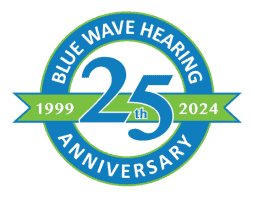- How Smoking Can Harm Your Ears - March 11, 2025
- Succeeding in the Workplace with Hearing Aids - February 10, 2025
- Welcoming the New Year with Better Hearing - January 2, 2025
According to the World Health Organization (WHO), over 1 billion people are at high risk of developing noise-induced hearing loss. People, ages 12-35, are particularly vulnerable to hearing loss as a result of loud noise exposure. WHO specifically cites that contributing to this increased risk is unsafe listening practices while using electronic devices. Audio from personal devices can reach high volume levels which are hazardous for the ears and hearing health. To bring global attention to this health risk, WHO launched an initiative: Make Listening Safe For All. This international campaign focuses on raising awareness about hearing loss, unsafe listening practices, and ways people can reduce their risk.
Noise-Induced Hearing Loss
One of the most common causes of hearing loss is loud noise exposure. One-time or consistent absorption of loud noise can cause permanent damage to the inner ear. Loud noise can cause the hair cells in the inner ear to lose sensitivity, eventually dying. These sensory cells are responsible for converting coming soundwaves to electrical signals that get carried to the brain to be further analyzed. The brain is then able to continue processing the incoming sound, assigning meaning to it which is what allows us to understand what we hear.
The impact of loud noise on hair cells can immediately or gradually lead to a reduced ability to process soundwaves. Hair cells in the inner ear, unlike other types of cells, do not regenerate. There are also no medical interventions that can correct the damage once it occurs. This results in permanent hearing loss referred to as noise-induced hearing loss.
How Loud is Too Loud?
You are likely wondering how loud is too loud or what volume of noise can cause hearing damage. Well, the sound is measured in units referred to as decibels (dB) and sound above 85dB is hazardous for hearing health. This is the equivalent of busy city traffic, a noisy restaurant, and household appliances like a blow dryer. According to experts, exposure to noise at 85dB for 8 hours is the limit for safe listening. For a noise that exceeds this, the exposure time should be drastically adjusted.
The Occupational Health and Safety Administration (OHSA), recommends reducing exposure time by half for every 3-decibel increase of noise. Their guidelines highlight safety thresholds for noise exposure which includes the following:
- 85dB: 8 hours
- 88dB: 4 hours
- 91dB: 2 hours
- 94dB: 30min
Exceeding this exposure time can cause irreparable damage to the auditory system. Personal audio devices like phones can reach noise levels nearing 100dB! At this level, exposure time is less than 10 minutes. Because listening to audio with personal electronic devices is part of daily life, this risk of hearing loss has increased as highlighted by the Make Listening Safe for All campaign. This also underscores the need to practice safety measures to protect hearing health.
Tips to Protect Hearing Health
Fortunately, noise-induced hearing loss is preventable! Integrating safety measures can drastically reduce your risk of developing hearing loss. A few tips to protect your hearing health include the following:
- Invest in noise-canceling headphones. These headphones utilize noise cancellation technology which reduces background noise. This prevents people from turning up the volume on their devices while navigating noisier settings. People are then able to listen to audio safely and comfortably.
- Wear hearing protection. In addition to noise-canceling headphones, there are different forms of hearing protection which is a great way to reduce the amount of loud noise that you absorb. This includes earbuds and earmuffs which offer the ears a protective barrier, reducing the amount and impact of loud noise. Wearing hearing protection while moving through loud environments is a great way to reduce your exposure.
- Measure volume. It is important to be aware of the volume of sound that you are exposed to so that you can adjust how long you are exposed to it. You can do this by downloading an app that measures decibels in the environment you are in.
- Maintain low volume settings. Be sure to maintain lower volume settings on your devices – phone, speaker, television, etc.
- Take listening breaks. Taking listening breaks throughout the day for a few minutes gives your ears and brain time to rest and replenish. This is important because the ears and brain are constantly absorbing and processing sound.
Practicing these safety measures is a great way to invest in and protect your hearing. Call us to learn more about how you can prioritize your hearing health!


